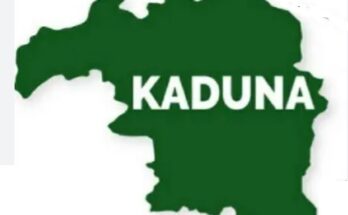The House of Representatives Committee on Insurance and Actuarial Matters is concerned about the economic implications of the country’s non performing loans.
David Agba reports
It is no longer news that the level of the nonperforming loans of the deposit money banks (DMBs) is still surging, with figures from the Central Bank of Nigeria (CBN) and international/ local rating agencies showing a sharp rise in the industry’s non-performing loans (NPLs). The matter is how these loans can be curtailed.
Global rating agency, Moody’s Investors Service, published a report recently on the country’s banks, stating that it expects NPLs to increase to around 12 per cent over the next 12 months, compared to the five per cent as of December 2015 recorded in the CBN’s data.
It noted that while Nigeria’s five biggest banks share common credit challenges related to the slow-down in Nigeria’s oil and gas dependent economy, their ability to withstand weak economic growth and volatile monetary conditions varies.
“However, despite shared credit challenges, there are differences among the banks in terms of their respective abilities to withstand weak economic growth and volatile monetary conditions, which are reflected in their differing baseline credit assessments (BCAs) that range from b1 to b3,” said Moody’s Vice President – Senior Analyst and co-author of the report, Akin Majekodunmi.
“Overall, Moody views Zenith and GTBank as best placed to cope, followed by Access and UBA and then FBN.” The publication of the peer comparison report follows Moody’s announcement on September 15 that the ratings agency has assigned first-time ratings to Zenith, GTBank, UBA and FBN, which account for approximately 48 per cent of Nigeria’s banking assets.
The agency said the forecast rise in NPLs stems from lower oil prices, a weakening naira, slower Gross Domestic Product (GDP) growth and rising inflation. Likewise, it expects foreign currency deposits, which have fallen around 30 per cent since the start of 2015, to stabilise over the next 12 to 18 months, as the impact of lower oil prices and the Central Bank of Nigeria (CBN)’s adoption of a Treasury Single Account fades. Moody’s expects loss absorbing capital buffers to hold steady on account of muted loan growth of around five -10 per cent over the next 12 to 18 months.
However, as a result of this weak loan growth, net interest income and fee and commission income will remain depressed. On the upside, Nigeria’s economic potential remains strong and continues to attract investment, the experts said, adding that depositor confidence and local currency buffers at the banks also remain robust.
The agency noted: “The forecast rise in NPLs stems from lower oil prices, a weakening naira, slower Gross Domestic Product (GDP) growth and rising inflation.” In fact, last week, the apex bank released its Financial Stability Report (FSR) as at June 2016, which indicated that NPLs rose by 158 per cent from N649.63 billion as at December 31, 2015 to N1.679 trillion as at the end of June 2016.
The FSR stated: “Nonperforming loans in the period under review grew by 158 per cent from N649.63 billion at end-December 2015, to N1,678.59 billion at end-June 2016. The industry wide NPL ratio rose to 11.7 per cent from 5.3 per cent, thus exceeding the prudential limit of 5.0 per cent.”
Besides, the report noted: “At end-June 2016, loans to the oil and gas sector constituted 28.77 per cent of the gross loan portfolio of the banking system as credit to that sector grew to N4,511.34 billion, compared with N3,307.87 billion at end-December 2015. Loans to state governments rose to N1,386.61 billion from N1,053.97 billion at end-December 2015, as declining revenues continued to constrain payment of salary by some states, funding of key services and execution of developmental projects.”
Indeed, the report also disclosed: “The total exposure to the top 50 obligors stood at N5.23 trillion (33.4 per cent) of total industry credit exposure of N15.68 trillion. Credit exposure to the dominant sectors as follows: 28.77 per cent to oil and gas sector; 12.95 per cent to manufacturing; 8.84 per cent to governments; and 8.69 per cent to general commerce.”
However, in granting the banks’ request, the regulator said it would be a oneoff that will only apply until the end of this year.
Significantly, the Asset Management Corporation of Nigeria (AMCON), which was set up in 2010 to absorb bad loans during the country’s financial crisis, has said it had stopped buying NPLs and is now focused on recoveries.
To this end, the House of Representatives Committee said the situation is worrisome and requires quick intervention of the Central Bank of Nigeria, CBN, and the Nigeria Deposit Insurance Corporation (NDIC).
Raising the issue during the committee’s oversight visit to the Corporation, Chairman of the Committee, Olufemi Fakeye, urged the NDIC to ensure that the rising incidence of NPLs in the banking industry do not pose a threat to the economy.
The Managing Director/Chief Executive (NDIC), Alhaji Umaru Ibrahim in his response disclosed that the Corporation in concert with the CBN have raised a joint committee to consider the establishment of another Asset Management Company (AMCON2) to acquire NPLs of banks.
Ibrahim said that the CBN and the Corporation are already exploring how to tackle the challenge of NPLs in the banking industry adding that one of the options available includes the establishment of another Asset Management Company similar to the Asset Management Corporation of Nigeria (AMCON), which would be private sector funded and driven.
That decision he said was part of considerations taken during the last quarterly meeting with the CBN.
According to him, “The second important decision we took was to study the need to establish what you may call AMCON 2, that is the second round of AMCON, which would be driven by the private sector. This is very important because we know what has happened.”
There are concerns about using taxpayers’ money to bailout institutions. So, it is in line of the global best practice that we go back to the drawing board because our initial concept of AMCON in the early 90s is that it was going to be a joint venture between the private and public sector investors, so as to minimise the risk of using taxpayers’ money to resolve the problem of buying and selling of bad loans.
“So, we have established a joint committee that would look into this and we hope that in the long run, we should be able to establish a second AMCON that would be private sector driven. Here, other investors can invest in it and if the CBN, NDIC or the Finance Minister can invest, so that going forward, buying and selling of bad loans would be under the control of that entity.
That would pave way for the gradual transition or folding up of the present AMCON”
Ibrahim also disclosed that the CBN and NDIC have set up a joint committee to study emergence of unconventional financial products.



